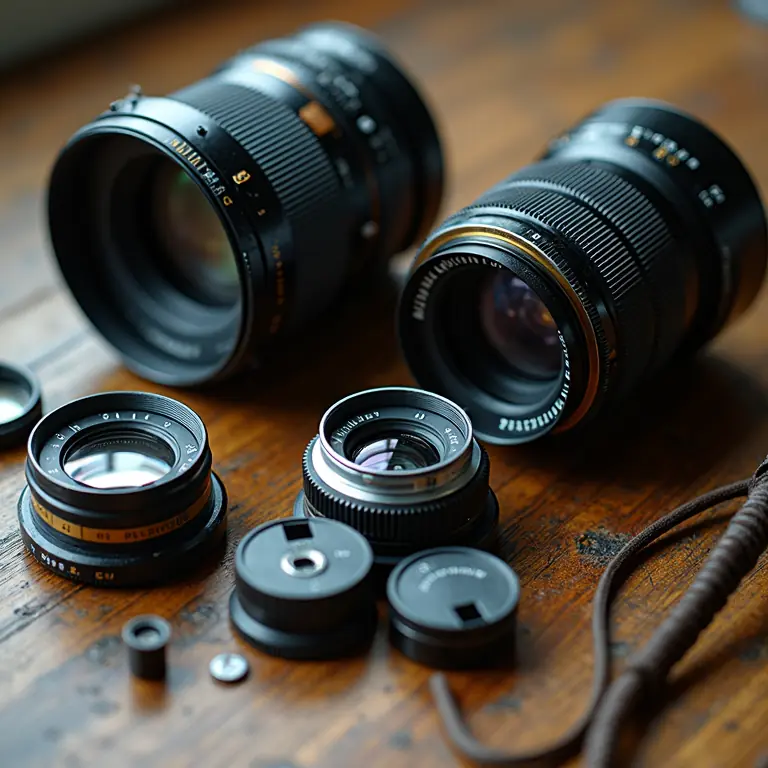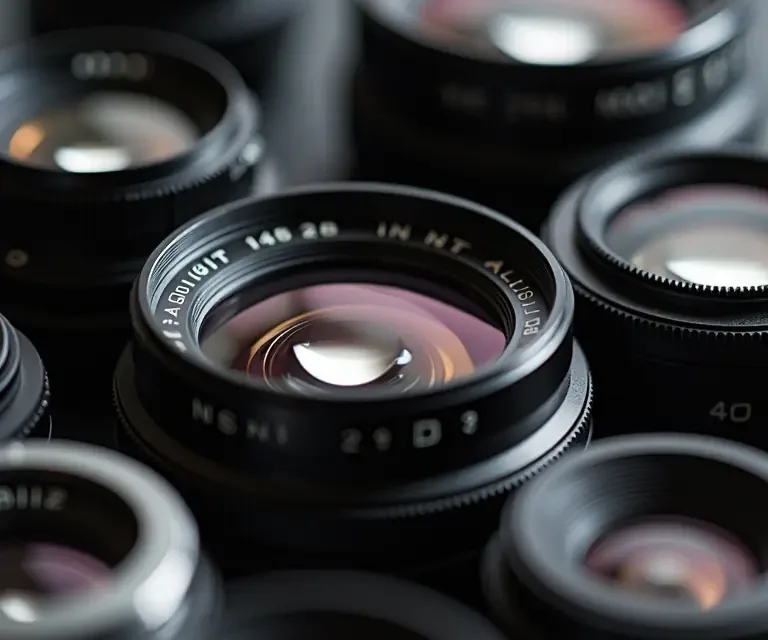For many, the allure of vintage camera lenses isn’t simply nostalgia. It’s a tangible connection to a rich history of optical engineering, a time when craftsmanship and meticulous design were paramount. But beyond the aesthetic qualities – the character, the flares, the soft focus – lies a surprisingly consistent scientific foundation. This article will delve into the optics of vintage lenses, exploring how the principles haven’t drastically changed over the decades, even as manufacturing techniques and materials have evolved. We’ll examine the artistry involved, the pursuit of clarity, and why these older lenses continue to captivate photographers today.
The Foundations of Lens Design: A Consistent Core
At their core, all camera lenses, vintage or modern, operate on the same fundamental principles of geometric optics. Light travels in straight lines, and lenses manipulate those lines to form an image. Refraction – the bending of light as it passes from one medium to another (air to glass, for example) – is the key. The shape of the lens, specifically its curvature, dictates how much the light bends. Understanding this is crucial to appreciating the consistency in lens design.
The basic elements of a lens system are:
- Refracting Elements: These are the curved pieces of glass that do the bending of light.
- Aperture: A diaphragm controlling the amount of light passing through the lens, influencing both brightness and depth of field.
- Focusing Mechanism: Allows the lens elements to move, adjusting the point where light converges to create a sharp image.
These elements were present in the earliest lenses, and remain central to modern designs. While materials and computational power have dramatically changed *how* lenses are designed and manufactured, the underlying physics remain remarkably constant. Take a look at this excellent overview of the principles:
Early lens makers, like those at Zeiss, Leitz, and Nikon (then Nippon Kogaku), weren’t guessing. They were applying rigorous mathematical principles and a deep understanding of light behavior. The designs they produced, often through painstaking trial and error, established a foundation that continues to influence lens development today. The difference lies largely in the *precision* achievable.
The Evolution of Lens Coatings: A Significant Improvement, But Not a Revolution
One of the most significant advancements in lens technology is the development of lens coatings. Early lenses suffered from significant light loss due to reflection at the glass-air interfaces. Each surface reflection meant a small percentage of light wasn’t contributing to the image. This resulted in dimmer images, lower contrast, and increased flare.
In the 1930s, chemists began developing coatings – thin layers of materials with different refractive indices – to reduce these reflections. These coatings work by creating destructive interference for reflected light waves, effectively cancelling them out. Multi-coating, applying multiple layers with varying refractive indices, further enhanced this effect.
This is where a substantial difference between vintage and modern lenses appears. Vintage lenses, especially those pre-1950s, often lack effective coatings, or have single-layer coatings that are prone to yellowing and degradation. Modern lenses boast complex multi-coatings that maximize light transmission and minimize flare. However, the *principle* of using interference to control light remains the same. The coatings are an optimization, not a fundamental shift in optical science.
Glass Types and Aberrations: A Constant Battle
The type of glass used in a lens significantly impacts its performance. Different glass types have different refractive indices (how much they bend light) and dispersion (how much they separate white light into its constituent colors).
Lens designers strive to minimize aberrations – imperfections in the image caused by the lens. Common aberrations include:
- Chromatic Aberration: The failure of a lens to focus all colors to the same convergence point, resulting in color fringing.
- Spherical Aberration: Light rays passing through the edges of a lens focus at a different point than those passing through the center, causing blurriness.
- Distortion: The lens bends straight lines, causing images to appear warped or curved.
- Vignetting: The corners of the image are darker than the center.
Early lens designers combatted these aberrations through clever combinations of different glass types. They painstakingly calculated the curvature of each lens element to correct for these imperfections. The introduction of new glass formulations, like fluorite and extra-low dispersion (ED) glass in the latter half of the 20th century, allowed for even greater correction of chromatic aberration.
However, the *goal* remained constant: to minimize aberrations and produce a sharp, clear image. Vintage lenses, while exhibiting more aberrations than their modern counterparts, often do so in a way that is considered aesthetically pleasing. The slight softness, the glow around highlights, the subtle color fringing – these characteristics contribute to the unique “look” of vintage lenses.
The Artistry of Lens Design: Balancing Science and Aesthetics
Lens design isn’t purely a scientific endeavor; it’s also an art form. Designers must balance competing priorities. Perfectly correcting all aberrations can sometimes result in a clinically sterile image, lacking in character.
Vintage lens designers often deliberately embraced certain imperfections. For example, a slight amount of spherical aberration can create a pleasing “glow” around highlights, while a touch of chromatic aberration can add a dreamy quality to the image. These choices were informed by both technical considerations and aesthetic preferences.

The constraints of the time also played a role. Early lenses were often limited by the available glass types and manufacturing capabilities. Designers had to be ingenious in finding ways to achieve the best possible results within these limitations. This necessity often led to innovative and unconventional designs.
Manufacturing Precision: The Key Difference
While the underlying science of lens design has remained consistent, the precision with which lenses are manufactured has dramatically increased. Early lenses were often ground and polished by hand, requiring immense skill and patience. Tolerances were relatively loose, meaning that there could be slight variations in the curvature and positioning of the lens elements.
Modern lenses are manufactured using computer-controlled machines that can achieve tolerances measured in microns. This level of precision allows for more complex designs and significantly reduces aberrations. It also enables mass production, making lenses more affordable and accessible.
However, it’s important to remember that even with modern manufacturing techniques, perfection is unattainable. There will always be some degree of variation in lens performance. And sometimes, those slight imperfections are what give a lens its unique character.
The Revival of Vintage Lenses: A Pursuit of Character
The renewed interest in vintage lenses isn’t simply about affordability. Photographers are actively seeking the unique aesthetic qualities that these lenses offer. The “look” of vintage lenses – the softness, the flares, the character – is often difficult to replicate with modern lenses, even with digital filters and post-processing.
This pursuit of character highlights a fascinating paradox. We’ve spent decades striving for optical perfection, yet many photographers are now actively seeking lenses with imperfections. This suggests that clarity isn’t the only goal; aesthetics and emotional impact are equally important.
Beyond Photography: Consistent Principles in Other Fields
The consistent scientific principles underlying lens design extend far beyond photography. The same optical principles apply to telescopes, microscopes, binoculars, and even the human eye. The pursuit of clarity and the control of aberrations are common challenges in all these fields. This consistency in scientific foundations is a testament to the enduring power of physics.
Interestingly, we see similar consistent principles in seemingly unrelated fields. The careful construction and iterative improvement of tools and objects across history often reveal underlying scientific consistency. For instance, the evolution of game pieces, from simple pawns to complex plastic figures, demonstrates a consistent drive for functionality and playability – see the evolution of board game pieces for more on this.
Similarly, early map legends, despite variations in artistic style, relied on a consistent set of symbols to convey information about terrain and landmarks. The decoding of these symbols reveals a surprisingly consistent approach to visual communication – explore the principles of early map legends.
Even the naming of brands, seemingly driven by marketing, often reflects historical etymology and consistent linguistic patterns – learn more about the etymology of brand names.
The principles of chemistry also remain consistent, even when applied to historical formulations. The science of vintage perfume formulation illustrates how understanding chemical reactions allows us to recreate scents from the past.
Finally, the fundamental physics of knot tying, essential for sailing and rescue, has remained remarkably constant over centuries. Discover the science of knot tying and its enduring principles.
Conclusion: A Legacy of Clarity and Character
The science of vintage camera lenses isn’t about outdated technology; it’s about a foundation of optical principles that remain remarkably consistent to this day. While manufacturing techniques and materials have evolved, the core principles of refraction, aberration control, and image formation have endured. The artistry of vintage lens design lies in the skillful balancing of science and aesthetics, resulting in lenses with a unique character that continues to captivate photographers. The revival of these lenses is a testament to the enduring power of craftsmanship and the pursuit of clarity – not just in the image, but in the story it tells.

